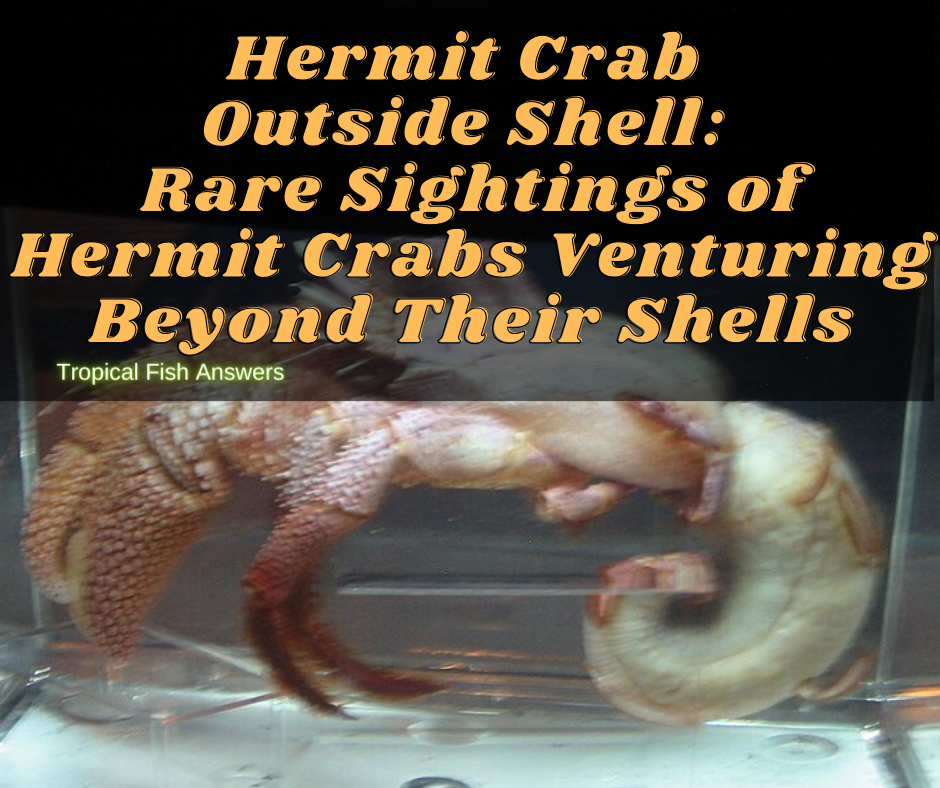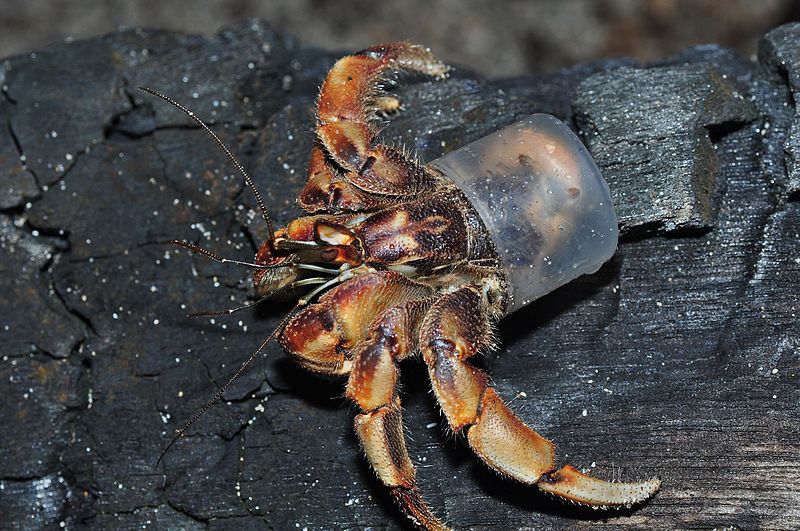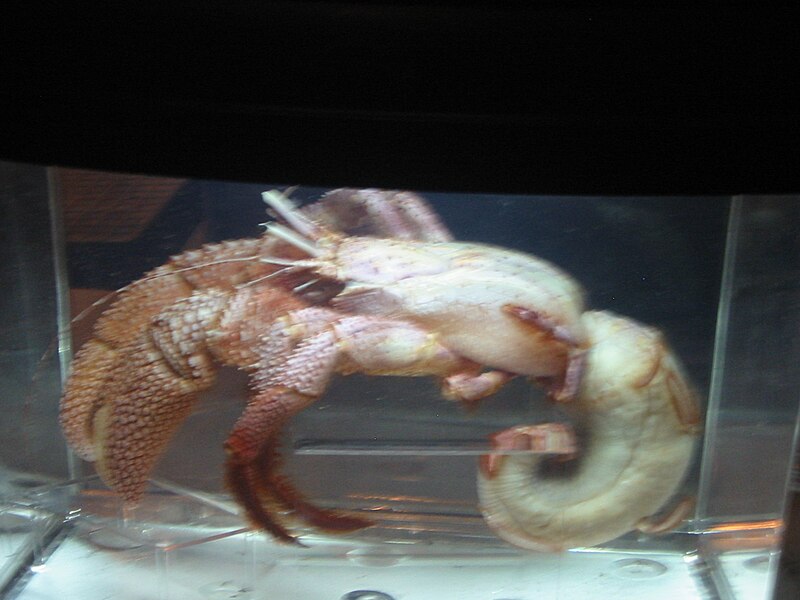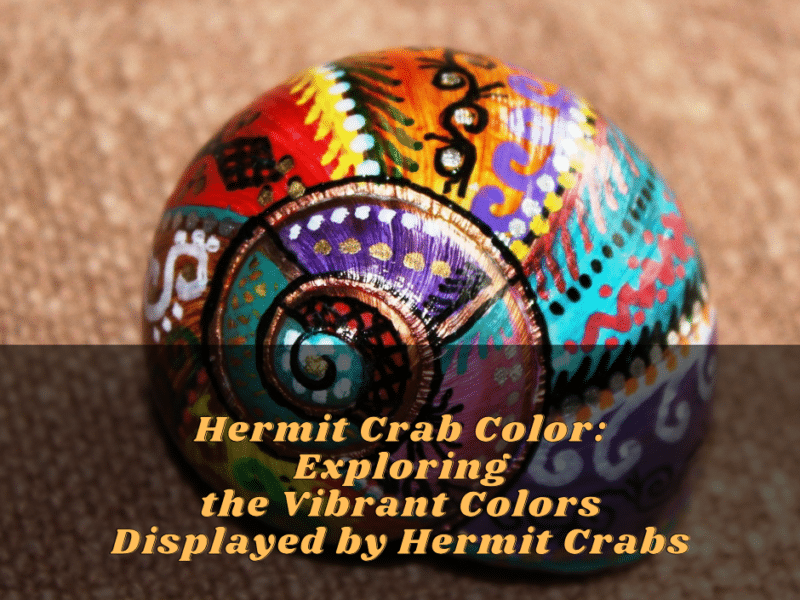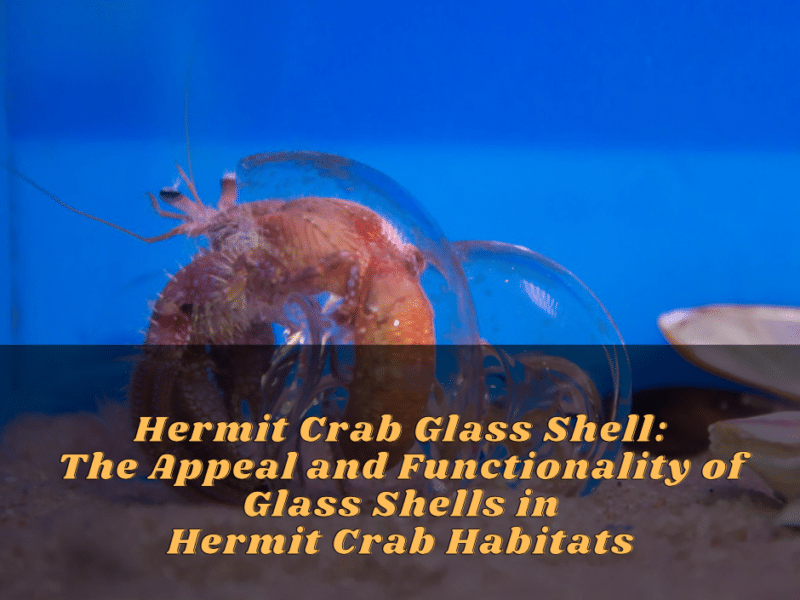Introduction
Hermit crabs are fascinating creatures that have captured the interest and curiosity of nature enthusiasts and marine biologists alike. These small crustaceans are known for their unique behavior of inhabiting empty shells for protection. However, there have been rare sightings of hermit crabs venturing beyond their shells, which has sparked intrigue and excitement among researchers and observers.
The Fascinating World Of Hermit Crabs
Hermit crabs belong to the family of decapod crustaceans and are found in oceans all over the world. They have soft abdomens that are vulnerable to predators, so they use empty shells as portable homes, carrying them as they grow. This behavior allows the hermit crab to retreat into the shell whenever it feels threatened, providing a shield of protection.
These curious creatures have a unique ability to explore and adapt to their environment. They scuttle along the ocean floor, using their strong pincers to scavenge for food and locate potential shells to inhabit. Their scavenger lifestyle ensures that they are constantly on the lookout for new shells to call home.
Hermit Crab Outside Shell – Rare Sightings Of Hermit Crabs Outside Their Shells
While hermit crabs typically rely on shells for protection, there have been rare sightings of these crustaceans venturing outside their shells. These sightings have puzzled scientists and sparked debates about the reasons behind this behavior.
One possible explanation is that the hermit crab outgrows its current shell and is in search of a larger one. In such cases, the hermit crab might temporarily abandon its shell, exposing its soft abdomen while it searches for a suitable replacement. This vulnerable state makes the hermit crab more susceptible to predation, making this behavior even rarer and more intriguing.
Another reason for hermit crabs being spotted outside their shells is during the molting process. Molting is the shedding of the old exoskeleton and the growth of a new one. During this period, the hermit crab becomes temporarily shell-less as it sheds its old exoskeleton and waits for the new one to harden. This molting process can take several days, leaving the hermit crab exposed and vulnerable.
In conclusion, hermit crabs are fascinating creatures with their unique behavior of inhabiting shells for protection. While it is rare to witness a hermit crab outside its shell, these rare sightings offer a glimpse into the intriguing world of these crustaceans. Further research and observation are needed to fully understand the reasons behind this behavior and its implications on the lives of hermit crabs.
Understanding Hermit Crab Molting
The Molting Process Of Hermit Crabs
One of the rare and fascinating behaviors observed in hermit crabs is their molting process. Molting is the shedding of the old exoskeleton, or outer shell, and the growth of a new one. This process is crucial for the hermit crab’s growth and development, as it enables them to accommodate their increasing size.
During the molting process, the hermit crab retreats into its shell and secretes enzymes to weaken the connection between the old exoskeleton and its soft body. Once the connection is loosened, the hermit crab pushes its body out of the old exoskeleton, leaving behind an empty shell. The new exoskeleton, which is initially soft and vulnerable, gradually hardens over time.
Signs And Indications Of Molting
There are several signs and indications that a hermit crab is undergoing the molting process. One common indicator is a decrease in activity level. As the hermit crab prepares for molting, it becomes less active, spending more time hiding and avoiding contact with other crabs.
Another sign is a change in appearance. The hermit crab’s exoskeleton may appear dull or discolored as it prepares to shed its old shell. Additionally, the hermit crab may look bloated or swollen, which is a result of absorbing water to help in the shedding process.
During the molting process, the hermit crab is highly vulnerable and delicate. It should be provided with a quiet and stress-free environment to facilitate the molting process. It is important not to disturb or handle a molting hermit crab, as this could cause them significant harm or even result in death.
After molting, the hermit crab’s new exoskeleton will appear soft and pale. It will take some time for the exoskeleton to harden and reach its full strength. During this period, the hermit crab will be more susceptible to predation and should be given extra protection and care.
In conclusion, the molting process of hermit crabs is a remarkable and delicate stage in their lifecycle. It is a time of vulnerability and growth, as they shed their old exoskeleton and develop a new one. Understanding and respecting this process is vital for the well-being and survival of hermit crabs in captivity. Proper care and observation during the molting process can provide valuable insights into the behavior and biology of these fascinating creatures.
Reasons For Hermit Crabs Leaving Their Shells
Hermit crabs are known for their unique behavior of residing in and carrying around various empty shells as a means of protection. However, there have been rare sightings of hermit crabs venturing outside their shells. This behavior may have several reasons, including growth and the need for a larger shell, as well as environmental stressors and disturbances.
Growth And Need For A Larger Shell
As hermit crabs grow, their current shells become inadequate and too small to accommodate their increasing size. When a hermit crab senses that it has outgrown its current shell, it may begin searching for a larger one. During this transition period, the hermit crab may temporarily leave its shell to explore and find a more suitable home. This behavior is vital for the crab’s survival, as it ensures they have enough space to grow and protect themselves.
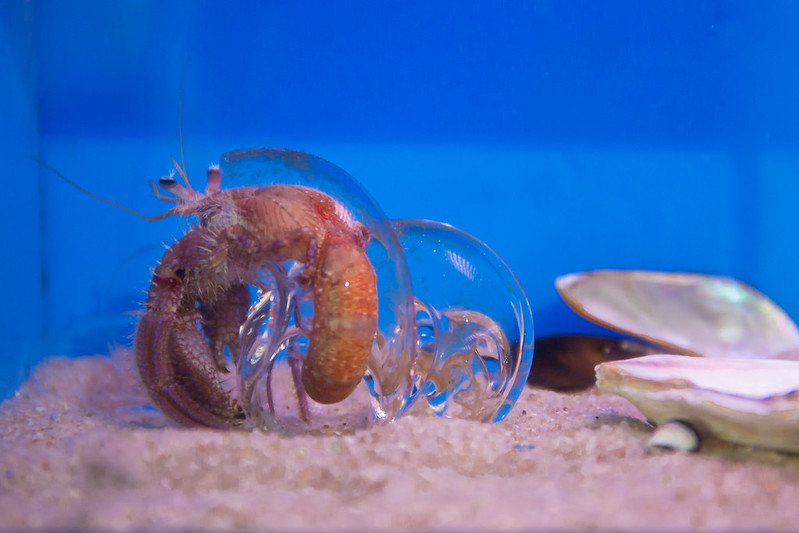
Hermit crabs are opportunistic and will occupy vacant shells left behind by other species or deceased individuals. By periodically leaving their old shell, hermit crabs are able to find a more spacious and well-fitted shell that offers better protection against predators and environmental challenges.
Environmental Stressors And Disturbances
Another reason hermit crabs may leave their shells is due to environmental stressors and disturbances. In certain situations, such as overcrowding, lack of suitable shells, or unfavorable environmental conditions, hermit crabs may feel compelled to abandon their shells temporarily. These stressors can disrupt the hermit crab’s ability to find or maintain a suitable shell, forcing them to seek alternative strategies for survival.
Environmental disturbances, such as changes in water temperature, pollution, or natural disasters, can also prompt hermit crabs to evacuate their shells. These events may create unlivable conditions, necessitating a temporary departure from their shells until the environment stabilizes.
It is important to note that hermit crabs leaving their shells should not be considered a normal or preferred behavior. The absence of a shell exposes them to increased vulnerability and risks. Therefore, it is crucial to provide hermit crabs in captivity with ample suitable shells and a well-maintained environment to minimize the likelihood of shell abandonment and ensure their overall well-being.
In conclusion, while hermit crabs are known for their preference for shells as a protective home, there are instances when they may leave their shells. This behavior can primarily occur due to the need for a larger shell as the crab grows or in response to environmental stressors and disturbances. Providing appropriate housing options and maintaining a conducive environment are key to mitigating these instances and promoting the health and safety of hermit crabs.
Steps To Help A Hermit Crab Outside Its Shell
Proper Handling And Care Techniques
When encountering a hermit crab outside its shell, it is crucial to handle the situation with care and take appropriate steps to ensure the crab’s well-being.
- Observe from a distance: Initially, it is essential to observe the behavior of the hermit crab without causing any additional stress. Avoid touching or moving the crab right away, as this may startle or further distress the crab.
- Create a suitable environment: Ensure that the hermit crab is in a comfortable and suitable environment. Maintain proper temperature, humidity levels, and provide sufficient hiding spots. These conditions will help reduce stress and allow the crab to feel secure.
- Provide extra shells: Offer a variety of shells in various sizes to give the hermit crab options for finding a new shell. Place them in the enclosure to make them easily accessible to the crab.
- Leave the crab to explore: Allow the hermit crab to freely explore and move around the enclosure. This will give the crab the opportunity to find a suitable shell on its own.
Encouraging Hermit Crabs To Re-enter Their Shells Safely
If a hermit crab has left its shell and is not attempting to find a new one, there are steps you can take to encourage it to re-enter its shell safely.
- Provide a shell with a similar fit: Identify the size and shape of the hermit crab’s original shell and offer a new shell that closely matches these specifications. Place the shell near the crab, making it easily accessible.
- Offer protection and cover: Create a calm and sheltered area within the enclosure, ensuring that it is free from disturbances. This will encourage the hermit crab to seek protection in a shell.
- Minimize stress factors: Eliminate any potential stressors in the environment such as loud noises, sudden temperature changes, or overcrowding. Reducing these stressors will create a more conducive space for the hermit crab to feel comfortable and secure in its shell.
- Patience and observation: Give the hermit crab time and space to assess its options. Monitor the crab closely without intervening unless necessary. Avoid touching or moving the crab unless it is in immediate danger.
Remember, hermit crabs outside their shells are in a vulnerable state and should be handled with caution. However, by providing the right environment, suitable shells, and minimal disturbances, you can help the hermit crab regain security and safety within its shell.
Preventing Hermit Crabs From Leaving Their Shells
Hermit crabs are known for their close association with shells, which they use to protect their soft bodies. However, under certain circumstances, it is not uncommon to find hermit crabs venturing outside their shells. This rare sight can be a cause for concern, as it suggests that the crab may be experiencing some form of distress. To prevent hermit crabs from leaving their shells, it is important to provide suitable shell options and maintain optimal habitat conditions.
Providing Suitable Shell Options
One of the main reasons hermit crabs leave their shells is because their current shell no longer fits their growing body. To address this issue, it is crucial to offer a variety of shells in different sizes and shapes. These shells should closely match the specifications of the hermit crab’s original shell. Placing these shells in the enclosure and making them easily accessible allows the crabs to explore and find a new shell that fits comfortably.
Additionally, it is important to regularly check the shells in the enclosure to ensure they are in good condition. Cracked or damaged shells may cause discomfort and encourage hermit crabs to abandon them. Providing high-quality, intact shells can help prevent this behavior.
Maintaining Optimal Habitat Conditions
Creating and maintaining a suitable habitat is essential in preventing hermit crabs from leaving their shells. Optimal temperature and humidity levels must be maintained to ensure the well-being of the hermit crabs. Sudden changes in temperature or humidity can cause stress and prompt the crabs to abandon their shells.
Furthermore, providing sufficient hiding spots and a calm, sheltered area within the enclosure allows hermit crabs to feel secure. This helps minimize stress and encourages the crabs to remain inside their shells.
Regularly monitoring the environment for potential stressors such as loud noises or overcrowding is also crucial. These stress factors can lead to hermit crabs leaving their shells in search of a safer and quieter place. By minimizing disturbances in the habitat, hermit crabs are more likely to feel comfortable and secure in their shells.
In conclusion, preventing hermit crabs from leaving their shells involves providing suitable shell options and maintaining optimal habitat conditions. By ensuring a variety of shells are available and creating a stress-free environment, hermit crabs can find a shell that fits their growing body and remain protected within it. Remember, observing and caring for hermit crabs with caution and empathy is key to their well-being.
Rare Sightings And Unusual Behavior
It is not uncommon to witness hermit crabs venturing outside their shells, but it is a relatively rare sight that can capture the attention of both hermit crab enthusiasts and concerned pet owners. These sightings of hermit crabs without shells often raise questions about their behavior and well-being. Understanding the reasons behind such behavior can help ensure the proper care and welfare of these fascinating creatures.
Observations Of Hermit Crabs Without Shells
When hermit crabs are seen outside their shells, it is usually an indication that something is amiss. This behavior can be a cause for concern, as it suggests that the crab may be experiencing some form of distress. In some cases, the hermit crab may be searching for a new shell that better fits its growing body. However, there are also instances where hermit crabs may temporarily leave their shells for other reasons, such as molting or fighting.
Unusual Circumstances Leading To Hermit Crabs Venturing Without Shells
One common reason hermit crabs leave their shells is because their current shell no longer fits their growing body. As hermit crabs grow, they need to find larger shells to accommodate their increasing size. If suitable shell options are not readily available in their habitat, they may be forced to venture outside their shells in search of a new one. This can be a stressful and vulnerable time for the hermit crab, as it leaves itself exposed to potential threats.
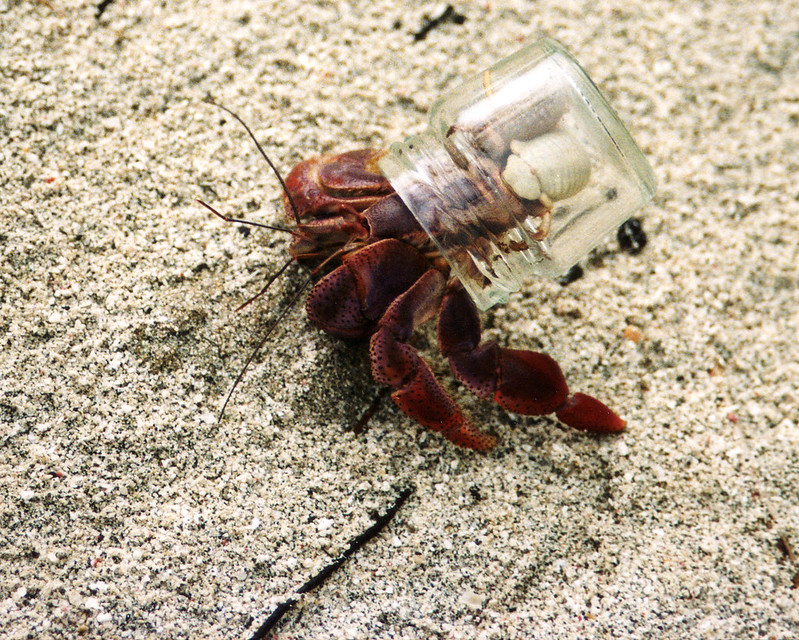
In addition to the need for a new shell, hermit crabs may also leave their shells due to molting. Molting is a natural process where the hermit crab sheds its exoskeleton to grow. During this time, the hermit crab is particularly vulnerable and may seek a safe place to molt. This can sometimes result in the crab temporarily abandoning its shell until the molting process is complete.
Furthermore, hermit crabs are social creatures and can engage in aggressive behavior. If a hermit crab is attacked or feels threatened by another crab, it may abandon its shell as a defense mechanism. This behavior is especially common during territorial disputes or when resources are limited.
In conclusion, rare sightings of hermit crabs venturing without shells can be a cause for concern. It is important for pet owners and hermit crab enthusiasts to understand the reasons behind such behavior and take appropriate actions to ensure the well-being of these fascinating creatures. Providing suitable shell options, maintaining optimal habitat conditions, and observing with caution and empathy are essential to prevent hermit crabs from leaving their shells and promote their overall health and happiness.
Conclusion
Appreciating The Natural Wonders Of Hermit Crabs
The rare sightings of hermit crabs venturing outside of their shells are intriguing occurrences that capture the attention of hermit crab enthusiasts and pet owners alike. These sightings provide a unique opportunity to appreciate the natural wonders of these fascinating creatures and delve deeper into their behavior and well-being. While it is not uncommon for hermit crabs to leave their shells, it is important to understand the reasons behind such behavior to ensure their proper care and welfare.
Caring For These Unique Creatures In Their Fragile Moments
When hermit crabs are observed outside their shells, it is typically a sign that something may be amiss. In many cases, this behavior indicates that the crab is in search of a new shell that better fits its growing body. This can be a stressful and vulnerable time for the hermit crab, as it exposes itself to potential threats. Providing suitable shell options for these crabs is crucial to support their growth and safeguard their well-being.
Additionally, hermit crabs may leave their shells during the molting process, which is a natural occurrence where they shed their exoskeleton to grow. During this time, hermit crabs are particularly vulnerable and seek a safe space to complete the molting process. Ensuring a comfortable environment and adequate hiding spots can aid in their successful molting and minimize any potential stress.
It is also important to recognize that hermit crabs are social creatures and may engage in aggressive behavior, leading them to leave their shells as a defense mechanism. Territorial disputes or limited resources can trigger such behavior. By providing ample space, resources, and monitoring their interactions, pet owners can help mitigate potential conflicts and provide a harmonious environment for these unique creatures.
In conclusion, rare sightings of hermit crabs venturing without shells serve as reminders of the delicate balance of nature and the importance of understanding their behavior. By appreciating the natural wonders of hermit crabs and taking appropriate measures to care for them during their fragile moments, we can contribute to their overall health and happiness. These mesmerizing creatures continue to captivate us with their intriguing behaviors, and it is our responsibility to ensure their well-being in their natural habitat or as pets in our homes.
FAQ: Rare Sightings of Hermit Crabs Venturing Beyond Their Shells
Q: Is it common for hermit crabs to venture outside of their shells?
A: No, it is quite rare for hermit crabs to move beyond the safety and comfort of their shells. Their shells provide them with protection and a sense of security. However, there have been a few rare sightings of hermit crabs venturing outside their shells.
Q: Why do hermit crabs sometimes leave their shells?
A: There can be several reasons for hermit crabs to venture outside their shells. One possible reason is that their current homes have become too small or uncomfortable. As hermit crabs grow, they need to find larger shells to accommodate their increasing size. Sometimes, their current shells may become damaged or deteriorated, prompting them to search for a new home.
Q: What happens when a hermit crab is without a shell?
A: When a hermit crab leaves its shell, it is referred to as being “naked” or “molted.” In this state, the hermit crab is extremely vulnerable and at risk of injury or predation. Therefore, it is crucial to provide suitable shells for the hermit crab to prevent any harm.
Q: How can I help a hermit crab that is without a shell?
A: If you come across a hermit crab that is without a shell, it is essential to take immediate action to ensure its safety. You can provide a variety of appropriate shells for the hermit crab to choose from and encourage it to find a new home. Additionally, maintaining proper temperature, humidity, and substrate conditions in the crab’s habitat will aid in its well-being and ability to find a suitable shell.
Q: What can I do to prevent hermit crabs from outgrowing their shells?
A: To prevent hermit crabs from outgrowing their shells, it is important to regularly monitor their growth and provide a range of shell options in different sizes. This will allow the crabs to easily transition into a larger shell when needed. Providing ample space and suitable conditions in their habitat will also contribute to their overall health and shell maintenance.
Q: Are there any accessories or additions that can improve a hermit crab’s habitat?
A: Yes, there are several accessories and additions that can enhance a hermit crab’s habitat. Some options include adding more surface area for shells, such as branches or platforms, where the hermit crabs can explore and find new homes. Additionally, creating hammock-like structures using netting can offer extra resting spots for the crabs.
Remember to always give credit and reference any information you share from various sources to avoid plagiarism. Respecting and protecting the intellectual property of others is essential.
